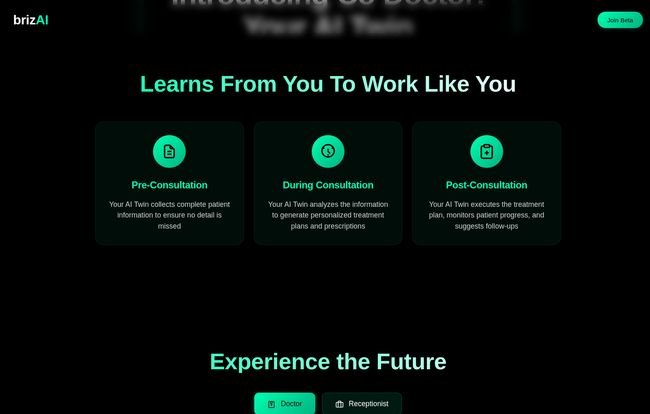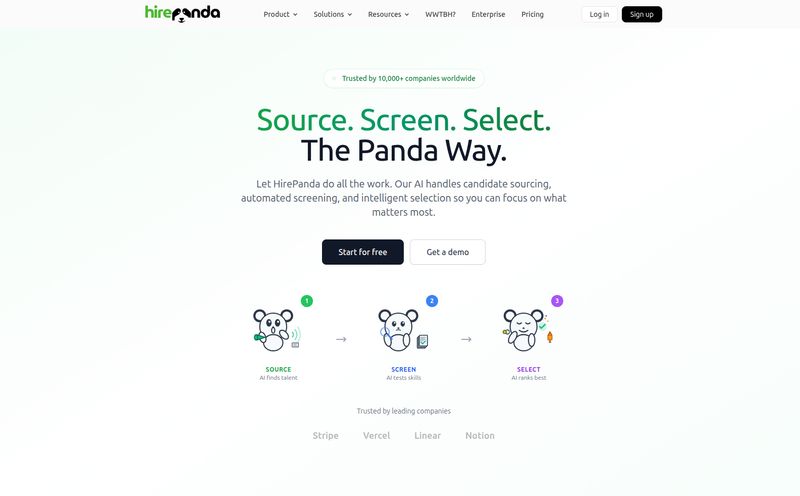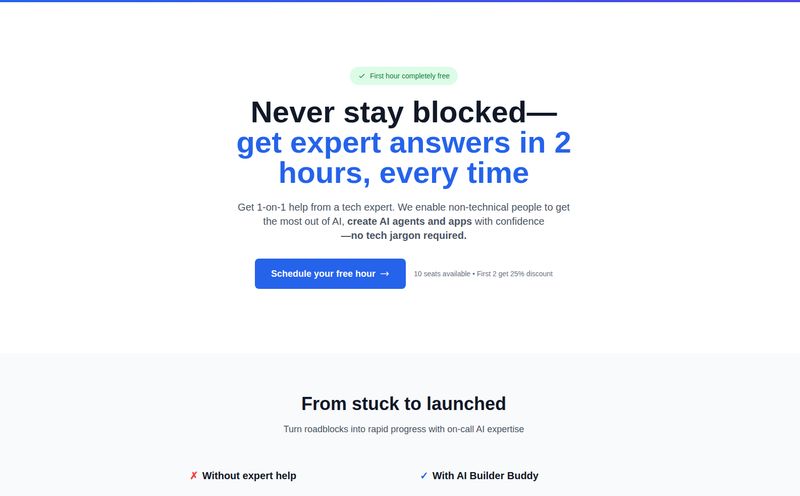I’ve been kicking around the digital marketing and tech world for a long time. Long enough to see trends come, go, and sometimes come back again wearing a different hat. Every other week, it seems, there’s a new platform promising to “revolutionize” something. Usually, I just nod, smile, and wait for the hype to die down.
But every so often, something catches my eye. Something that isn’t just hype. Something that genuinely feels like a small peek into the future. That’s the feeling I got when I stumbled upon BrizAI and their new platform, Co-Doctor.
The premise is wild, ambitious, and frankly, a little bit sci-fi. They call it an “AI Twin.” An artificial intelligence that learns from you, the healthcare professional, to work like you. It’s designed to handle the grunt work, the repetitive tasks, the stuff that bogs you down, so you can focus on the thing that actually matters: the patient in front of you.
Sound too good to be true? Yeah, I thought so too. So I did what I do best—I started digging.
What Exactly is this BrizAI Co-Doctor Thing?
Let's get one thing straight right away. This isn't about replacing doctors with robots. I think we can all agree that’s a dystopian movie plot we don't need. Instead, think of Co-Doctor as a digital doppelgänger for your administrative and analytical brain. It’s a hyper-efficient medical scribe, a data analyst, and a personal assistant all rolled into one.
The core idea, as BrizAI puts it, is that the system “Learns From You To Work Like You.” This isn't some one-size-fits-all software. It’s designed to adapt to your specific methods, your prescribing habits, your follow-up cadence. It observes and learns, becoming a personalized tool rather than a rigid, generic program. It’s a pretty bold claim, but if they can pull it off, it could be a game-changer for practice efficiency and reducing physician burnout—a topic we all know is a massive, burning issue in the healthcare industry. I've read some harrowing stats from the American Medical Association on burnout, and tools like this seem aimed squarely at that problem.
A Look Under the Hood at How Co-Doctor Works
Alright, so how does it actually function? BrizAI’s website breaks it down into a neat, three-stage process that follows the typical patient journey. It's a logical flow that makes a lot of sense.
Before the Patient Even Arrives: The Pre-Consultation
We all know the dance. The endless paperwork, the clipboards, the frantic search for a patient's history right before they walk in. Co-Doctor aims to wipe that slate clean. Before the appointment, the AI Twin takes over the task of collecting all the necessary patient information. We’re talking medical history, current symptoms, insurance details—the whole nine yards. This means when the patient arrives, you’re already armed with a complete, organized picture. No more scrambling. No more “Oh, I forgot to mention…” moments getting lost in the shuffle.
The Consultation Itself: Your AI-Powered Assistant
This is where things get really interesting. During the consultation, the Co-Doctor acts as your real-time partner. It analyzes the information it's gathered, listens to the current conversation (presumably with consent and top-notch security), and helps generate personalized treatment plans and prescriptions based on your established patterns and best practices. Imagine having an assistant who instantly knows your preferred first-line treatment for a specific condition or your go-to referral network. It’s about making clinical decision support feel less like a clunky EMR alert and more like a natural extension of your own thinking.
After the Appointment: Closing the Loop
The job isn't over when the patient leaves. In fact, that’s often where the most critical—and most frequently dropped—work begins. The post-consultation phase is where Co-Doctor promises to execute the treatment plan, monitor the patient's progress remotely, and even suggest follow-ups. Now, it's important to note that the “executing” part seems to be the most forward-looking feature, and likely still in heavy development. But the concept of an AI that helps manage patient adherence and flags potential issues before they become critical? That’s not just convenient; that’s proactive healthcare.

Visit BrizAI
The Real-World Impact on Doctors and Clinics
So, let's step back from the features and talk about the why. What does this mean for a small family practice in Des Moines or a bustling specialist clinic in New York?
First and foremost, it’s about time. The most finite resource a doctor has. By automating the soul-crushing administrative load, the goal is to give that time back. Time to listen more carefully. Time to think more deeply about a complex case. Time to, you know, actually have lunch. This isn't just about efficiency for the sake of numbers; it's about creating a more sustainable and human-centric work environment.
Secondly, it’s about personalization at scale. Normally, a highly personalized care plan takes a huge amount of effort. With an AI twin handling the data synthesis and planning, you can theoretically provide that bespoke level of care to every single patient, without drowning in the associated workload. The system remembers every detail, connects the dots between visits, and helps you build a truly longitudinal view of a patient’s health.
But Let's Be Realistic: The Hurdles and Concerns
Okay, I’m an optimist, but I'm also a realist. As exciting as this all sounds, we have to talk about the potential pitfalls. My brain immediately goes to a few places.
The big one is the risk of errors. An AI is only as good as the data it’s trained on. What if it misinterprets a nuance in patient-reported symptoms? What if it generates a plan that overlooks a rare comorbidity? The need for meticulous human oversight is, and will always be, absolutely non-negotiable. This tool has to be a “co-doctor,” never the sole doctor.
Then there’s the human element. Healthcare is deeply personal. Will relying on an AI for data gathering and planning create a new kind of distance between doctor and patient? It's a valid concern. The hope is for the opposite—that by removing the computer screen as a barrier during consultations, it actually fosters more direct, meaningful interaction. But that's a tightrope to walk.
Finally, there's data privacy and security. We're talking about the most sensitive information imaginable. BrizAI will need to be Fort Knox-levels of secure and transparent about its data handling practices to earn the trust of both doctors and patients. Compliance with standards like HIPAA isn't just a checkbox; it's the entire foundation of their business.
Who is This For? Doctors, Receptionists, and the Modern Clinic
What I found particularly clever on their site was the segmentation. They have distinct paths for “Doctor” and “Receptionist.” This shows they understand that a clinic is an ecosystem.
For the Doctor, the benefits are clear: clinical support, time savings, and reduced cognitive load.
But think about the Receptionist. Their AI twin could automate appointment reminders, handle initial patient intake forms, and manage follow-up scheduling. This frees them up to handle the complex, human-centric parts of their job—like calming an anxious patient or dealing with a tricky insurance query. It’s a tool for the whole practice, not just the clinician.
So, How Much Does BrizAI Co-Doctor Cost?
Ah, the million-dollar question. I scoured the site looking for a pricing page. And you know what I found? A 404 error. I’m not even kidding. You can see it in the screenshot I took. It's a bit funny, and a classic sign of a product that's still in its early stages.
Right now, BrizAI Co-Doctor is in a closed beta. You can’t just buy it off the shelf. You have to go to their site and “Register for Beta.” This means pricing is likely not finalized and they're probably being selective about their initial partners. For early adopters, this can be a great opportunity to help shape the product and potentially get in at a favorable price point. For everyone else, we’ll just have to wait and see.
So, what’s the verdict? I’m cautiously optimistic. BrizAI's Co-Doctor is one of the most interesting applications of practical AI I've seen in the healthcare space in a while. It’s not just another analytics dashboard; it's an attempt to fundamentally change the day-to-day workflow of healthcare professionals for teh better.
Will it live up to its promise? The jury is still out. But in a field desperate for solutions that combat burnout and bring the focus back to the patient, an AI Twin might just be the odd, futuristic, and brilliant idea we need. It's one I'll be watching very, very closely.
Frequently Asked Questions
- Is BrizAI's Co-Doctor meant to replace doctors?
- Absolutely not. The name "Co-Doctor" says it all. It’s designed to be an assistant or a partner, automating repetitive tasks and providing data analysis to support the human doctor's decisions, not to make them independently.
- How does the AI learn to work like me?
- The platform uses machine learning to observe your patterns over time. This includes your diagnostic processes, treatment preferences, prescription habits, and follow-up schedules. The goal is for the AI to adapt to your unique style, making its suggestions more relevant and useful.
- Is my patient data safe with Co-Doctor?
- While BrizAI is still in beta, any platform handling Protected Health Information (PHI) in the US must be HIPAA compliant. This involves stringent technical, physical, and administrative safeguards to protect data privacy and security. We expect BrizAI to adhere to these and other international standards as a baseline requirement.
- When will BrizAI Co-Doctor be fully available to the public?
- Currently, Co-Doctor is in a private beta phase, meaning access is limited to a select group of users. There is no public release date announced yet. You can sign up on their website to be considered for the beta program and to receive updates.
- What is the difference between the "Doctor" and "Receptionist" functions?
- The tool is designed for different roles within a clinic. The "Doctor" function focuses on clinical tasks like analyzing patient data and generating treatment plans. The "Receptionist" function is geared towards administrative tasks like automating patient intake, scheduling, and sending reminders.



